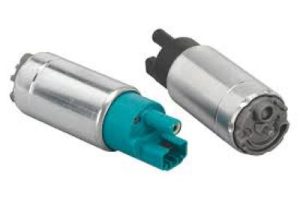Maintain a higher level of fuel in the tank To increase Fuel Pump life, it is advisable to keep an intact amount of petrol which depends on daily needs. If your tank is below a quarter then there isn't any fuel to work as coolant and so this can cause overheating. When the tank drops to nearly empty and refills, very frequently this Heat should be obviated since it shortens a Fuel Pump's Lifetime by approximately 15%, especially amid high-performance motors having added longevity can extremely quickly become an issue. Maintaining at least 1/4 of a tank can keep that pump efficiently cooled as well, by helping reduce its thermal stress and prolong it.
The other aspect of vehicle maintenance that affects the lifespan of a Fuel Pump is the use of good quality fuel with few impurities. Particles in the low-quality or polluted fuel clog up the pump, making it work twice as hard and decreasing efficiency by 20 percent Using high quality fuel brands all of the time prevents sediment build up, and thus reducing wear on both pump and even possibly maintain your fuel filter in best condition as it does not have so much gunk to deal with. A good fuel, as per the American Petroleum Institute (API) usually has detergents inside it which keep your pump cleaner and reduce wear of components due to contamination.
Fuel Filter Preventive Care: Last but not least, regular fuel filter maintenance supports an extended Fuel Pump life. The problem is when a fuel filter gets clogged, it restricts fuel flow and makes the pump work harder to move gas from whence it came into your engine. For some vehicle makes and models, replacing fuel filters at 30k miles or manufacturer's recommended intervals can give the pump a break of up to 10% which is huge in terms of improving operational efficiency. An example of this includes car manufacturers such as Ford and GM who recommend fuel filter changes at standard service intervals to minimize early Fuel Pump wear.

2) Round amperes -- Voltage consistency is a very importance aspect whilst taking into consideration the sturdiness of your Fuel Pump. Fuel Pump is maintained at it's just the requirements by automotive electrical systems which usually operate between 12 to 14 volts. Over time these voltage fluctuations can cause components to heat up and efficiency to drop. Your Pump, Voltage drops should be avoided by ensuring that the alternator and battery are working since making sure your vehicle's voltage is correct helps eliminate undue stress on these pumps. Similarly, a Fuel Pump can last up to 20 percent longer when paired with an electrical system that is regularly maintained.
Most aftermarket companies, such as Fuel Pump applications and their electrical engineers require a reputable brand of wiring and connectors to ensure the voltage levels remain consistent throughout your system. Resistance from poor connections leads to voltage drops, and the pump fights these by spinning harder than it should which causes wear. Quality connectors help deliver consistent voltage which is key in avoiding electrical failures that can shorten the life of a Fuel Pump.];//Creating High-quality.Connectors maintains Voltage Stability becouse it prevents an increase in Electrical resistance and any possible Failure of System due to Quality problems…
It helps to expand the life of Fuel Pump if idling time is decreased(reordered). In hot climates, especially when idle for long periods, this increases the heat build up in the pump. Less idling(which saves fuel) and less heat to the pump. Idling reduction practices can mean the Fuel Pump could last as much as 10% longer in stop and go traffic, a simple automotive tip for vehicle owners to easily implement into their daily driving routine.
Lastly, Choosing a Fuel Pump that is proper fitting for your vehicle gives better fitment and saves you from the hassle. Car manufacturers such as Toyota and Honda really love to stress the use of OEM (original equipment manufacturer) parts to adhere directly with how their cars were designed. By installing a pump with the right flow rate and pressure range, you prevent overworking it as well as the engine so they both operate within their intended limits resulting in less wear.